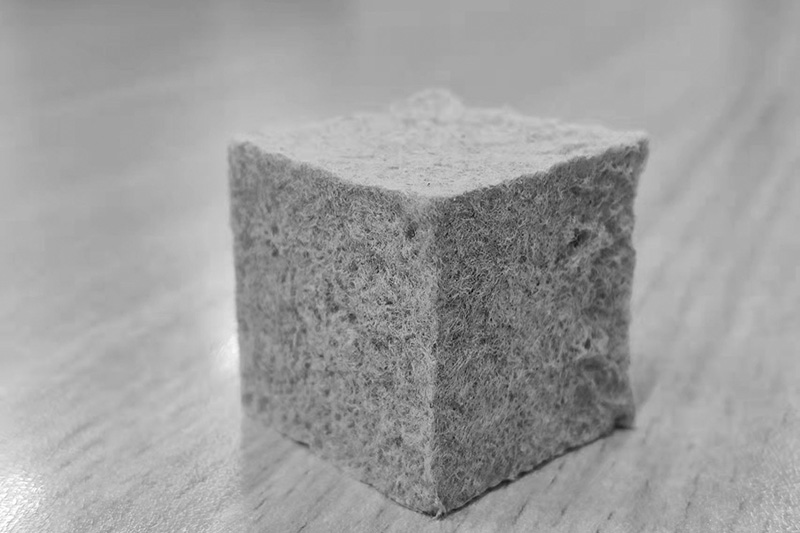Upcycling cardboard to protective foam
A cushioning foam made from cardboard waste is said to be stronger and offers better insulation than plastic-foam-based protective material.

This cardboard-based foam reinforced with gelatin could make packaging materials more sustainable
© Jinsheng GouThis lightweight, cellulose aerogel is produced without chemical pretreatments, report researchers in China.
In a paper in ACS Sustainable Chemistry & Engineering, the researchers describe the biodegradable foam as having a low density of 0.065-0.081g/cm3 and a porosity of more than 92%. The thermal conductivity is said to be a low 0.044W/mK, with what they describe as ‘excellent’ mechanical properties and ‘outstanding’ cushioning properties.
They attribute this performance to the reinforced cell skeleton that is formed by the wastepaper fibres coupled with PVA glue and gelatin, respectively offering a ‘bridge-linking’ and ‘membrane-linking’ structure.
This is deemed to give the foam 'excellent coordination between the thermal insulation and energy absorption properties, which are typically considered incompatible with each other in conventional cushioning foam materials'.
The group at Beijing Key Laboratory of Wood Science and Engineering broke down the cardboard scraps in a blender to create a pulp, and then mixed it with gelatin or PVA glue. These mixtures were poured into moulds, refrigerated and then freeze-dried to form cushioning foams. The researchers note the freeze drying is nitrogen-free.
They have created a biodegradable cushioning packaging material with ultrahigh energy absorption, for product delivery in extreme environments, by impregnating the material with a shear thickening fluid (STF).
The more heavy-duty foam combines pulp, gelatin, PVA glue and a silica-based fluid (SiO2) that hardens as force is applied – all reportedly naturally degradable, according to Senior Author Jinsheng Gou.
The team notes that their version of the cardboard-based foam withstood hits from a hammer without falling apart, indicating applications in force-intensive deliveries, like parachute-free airdrops.
When the external impact velocity surpasses the critical shear rate of STF, the increased mass fraction and content of STF can enhance the energy-absorption properties of the wastepaper-based foam, the researchers concluded. The STF can reportedly decrease the maximum impact acceleration by up to 85%.
Gou says that their process 'is versatile and works with various cardboard types. Initial trials suggest potential applications for a wide range of wastepaper materials'.
The researchers believe their work is a simple but efficient method to upcycle cardboard.







